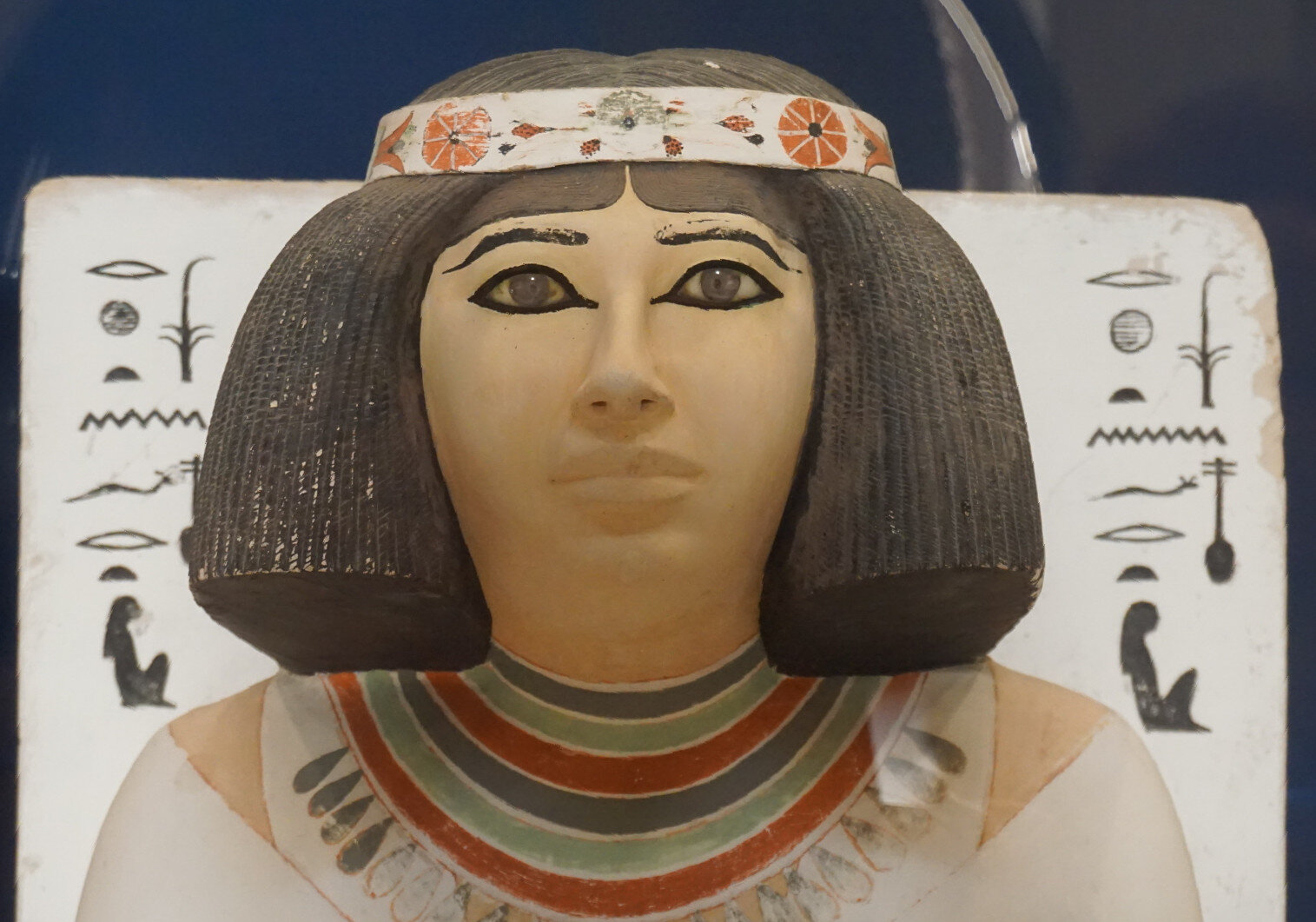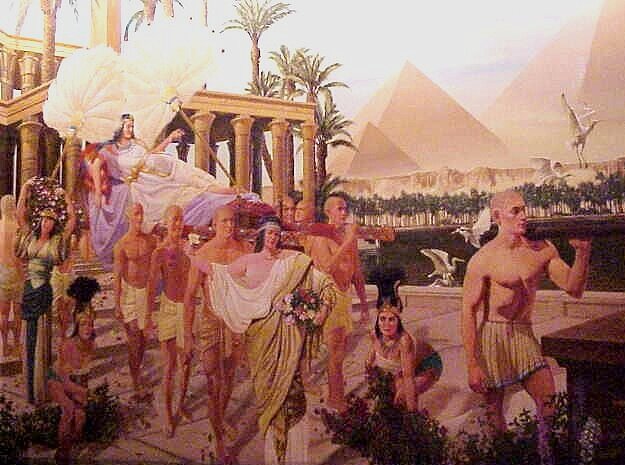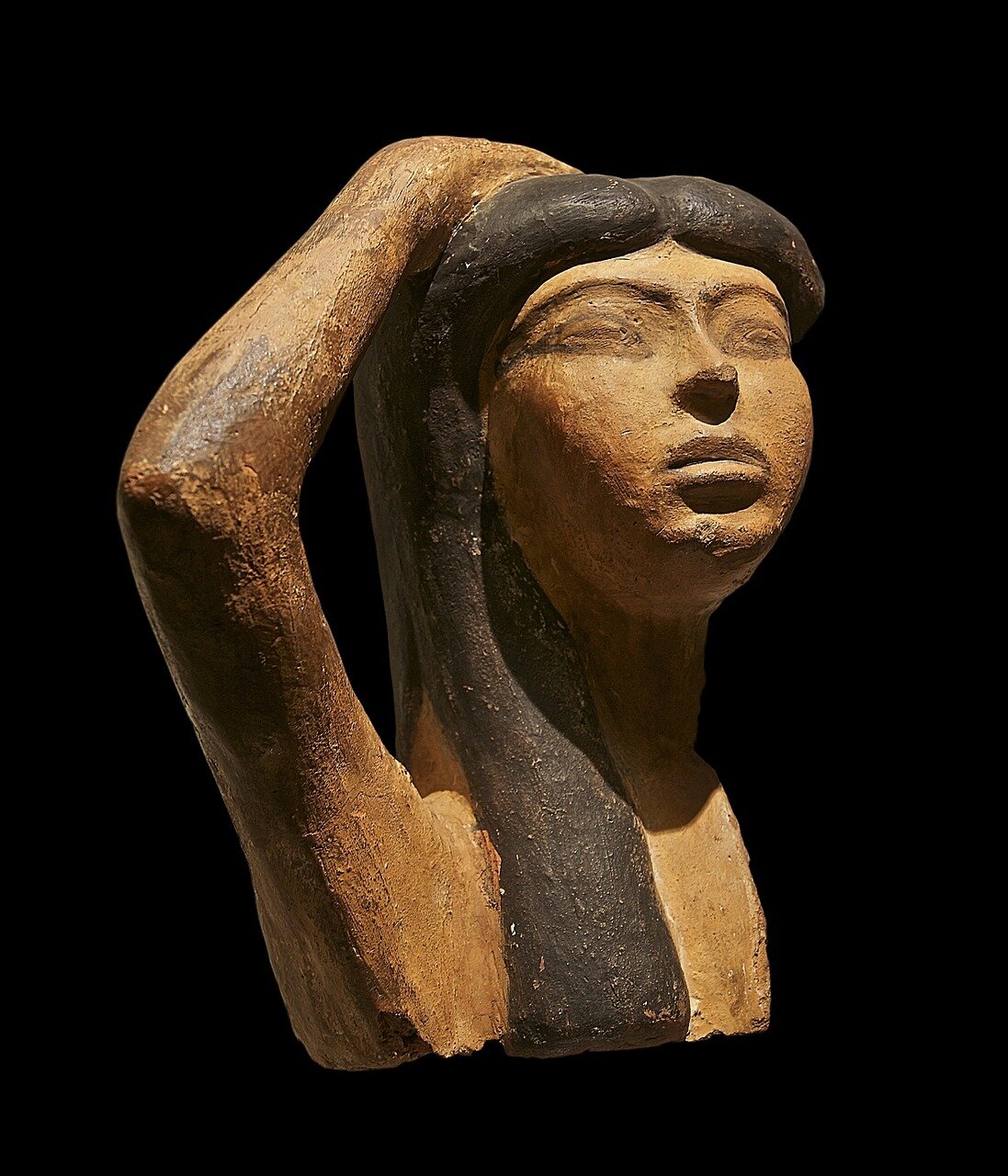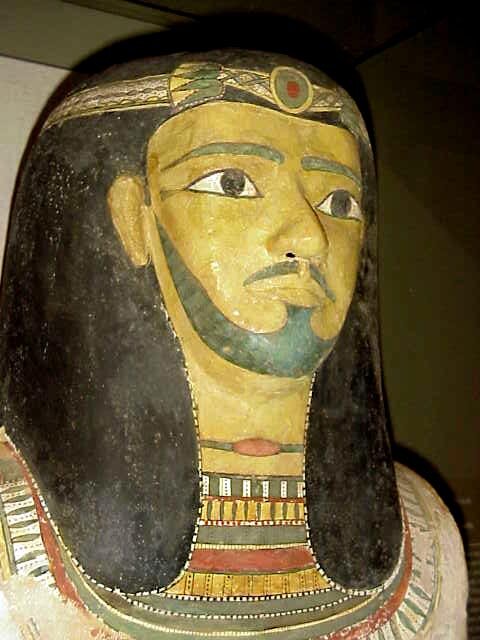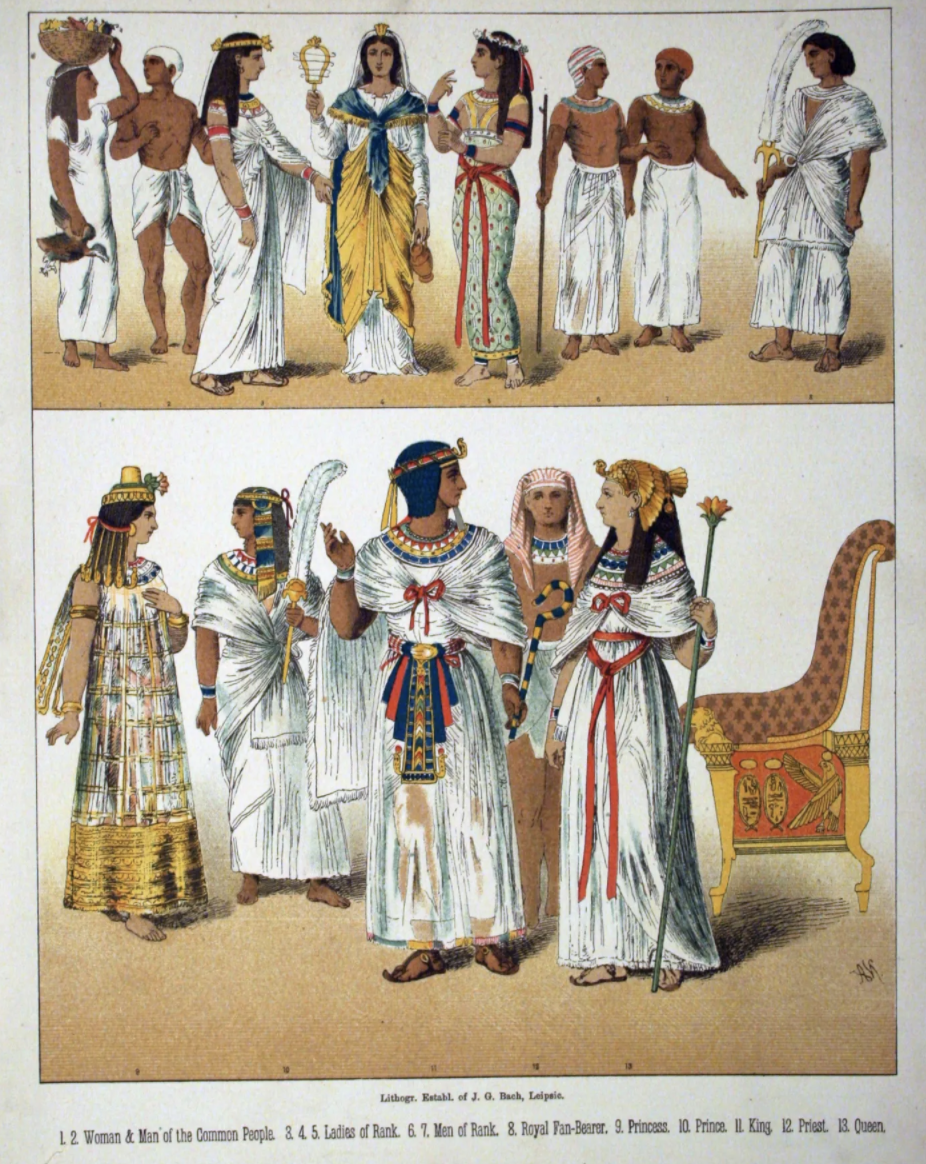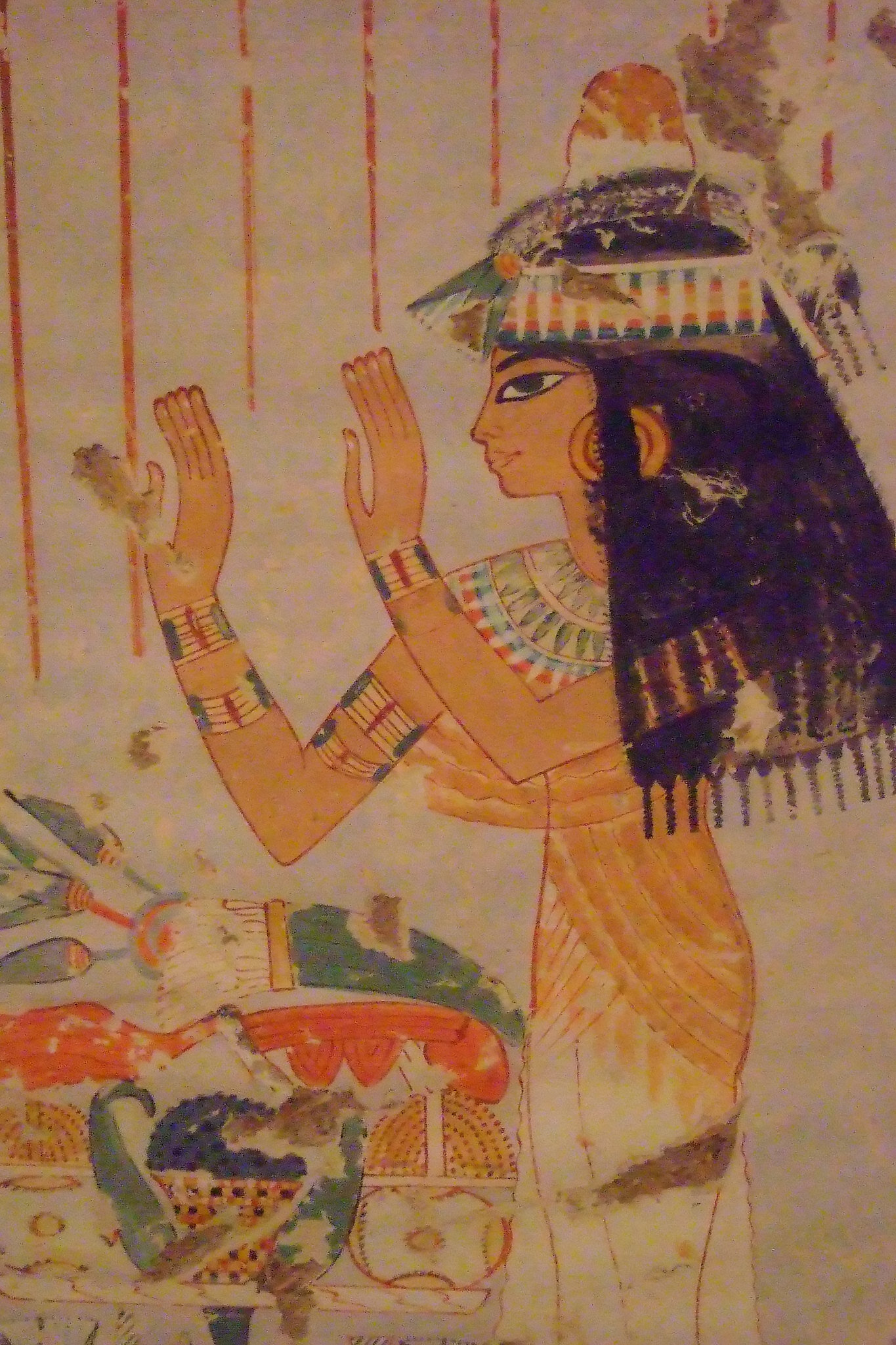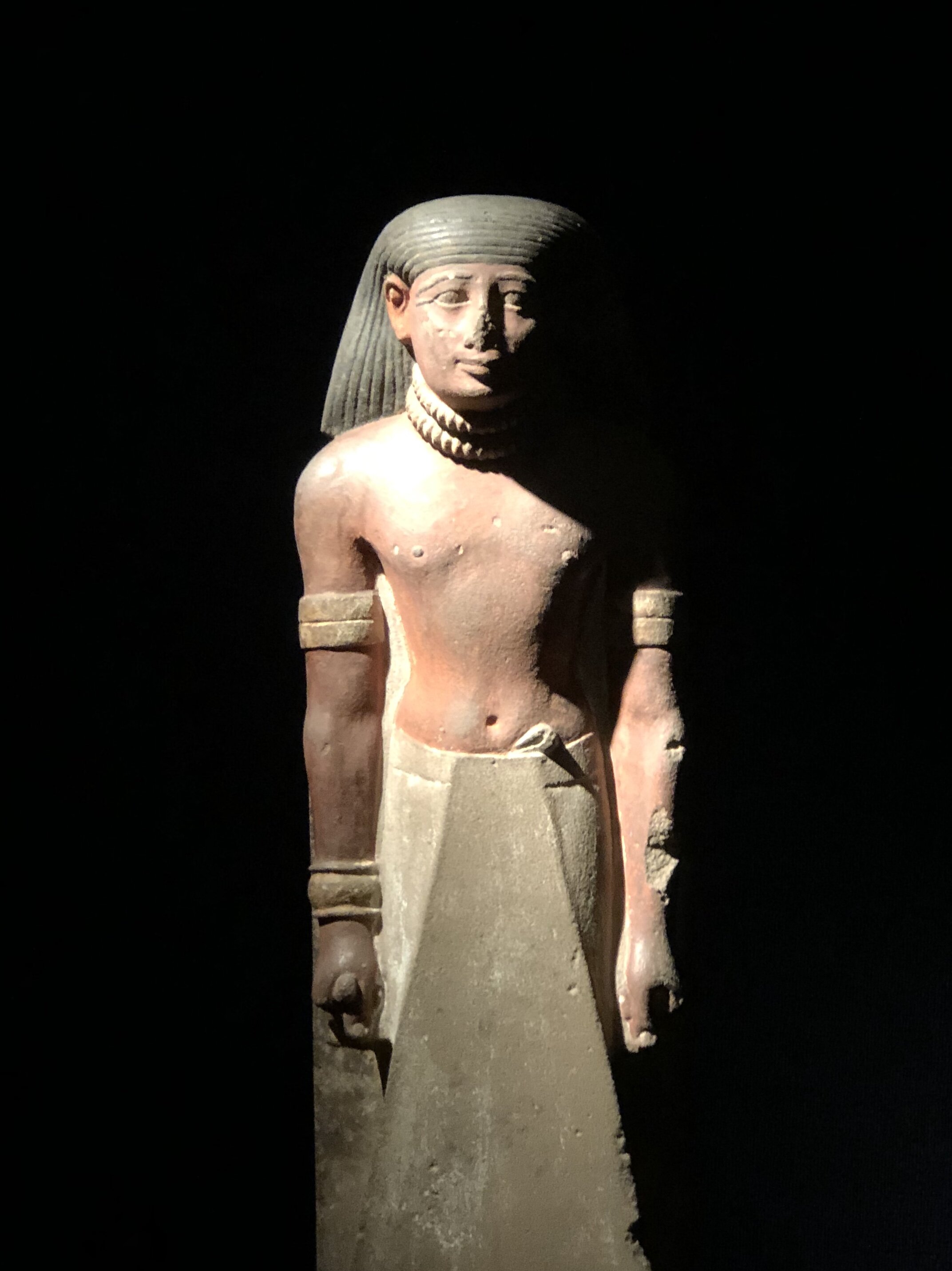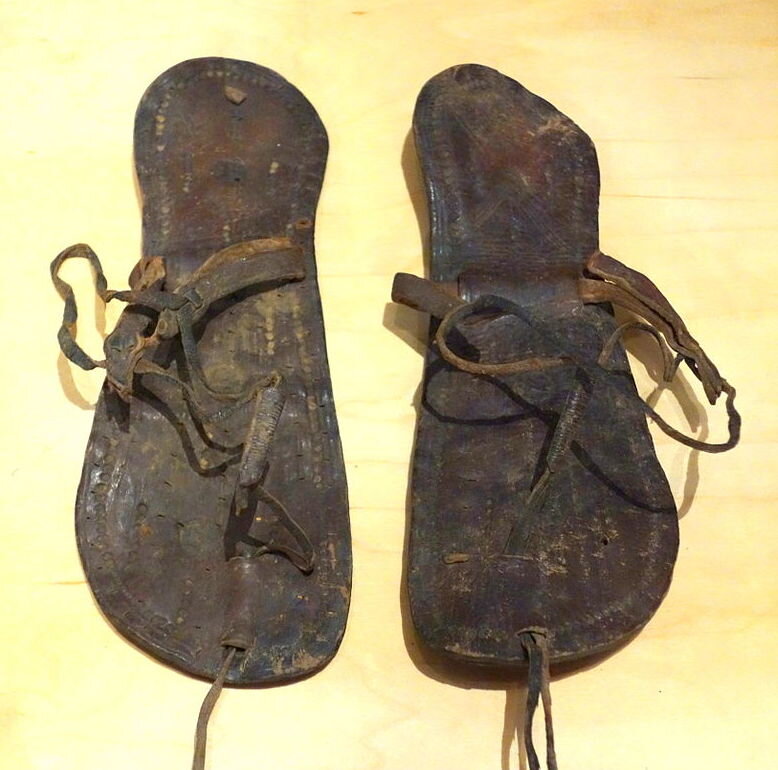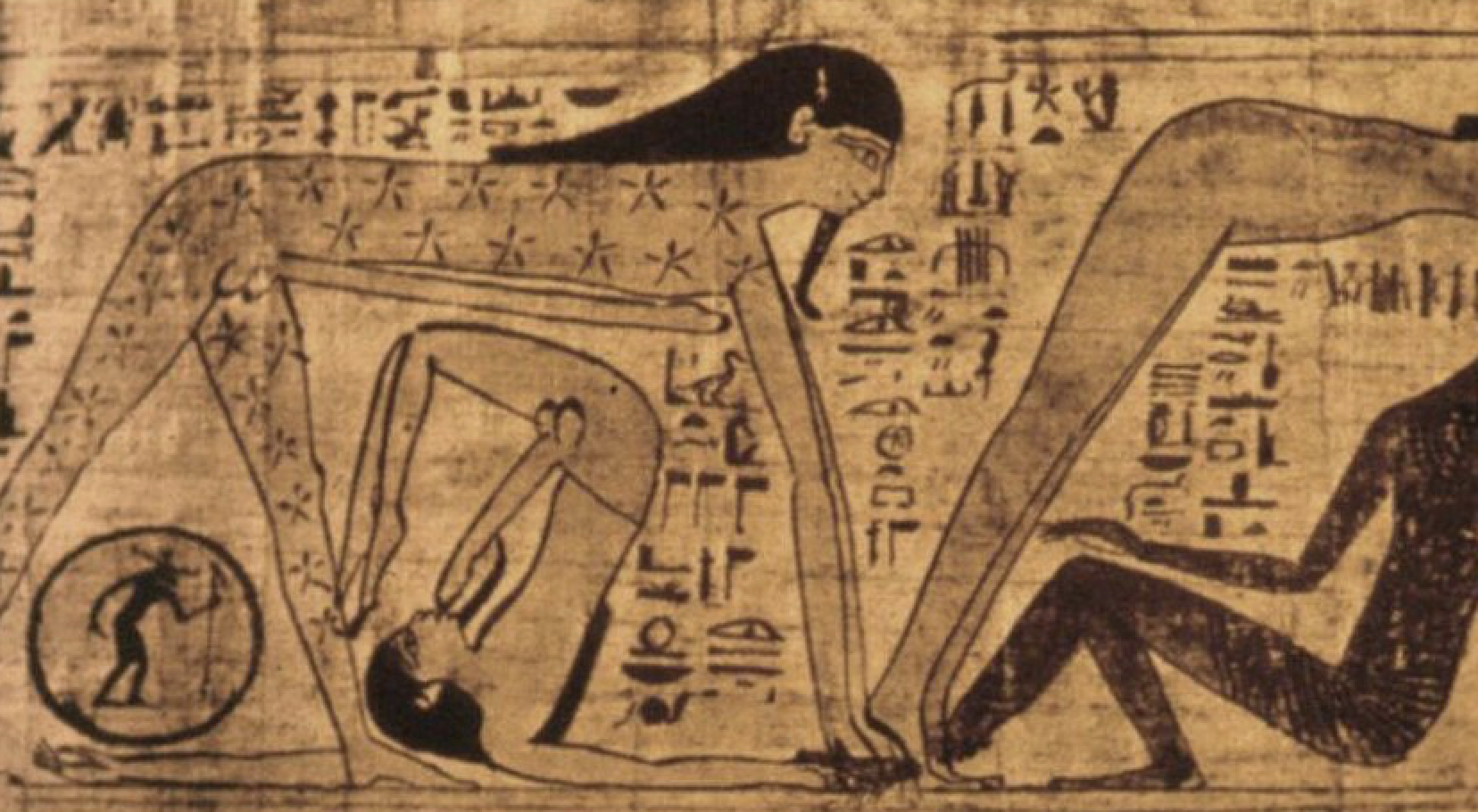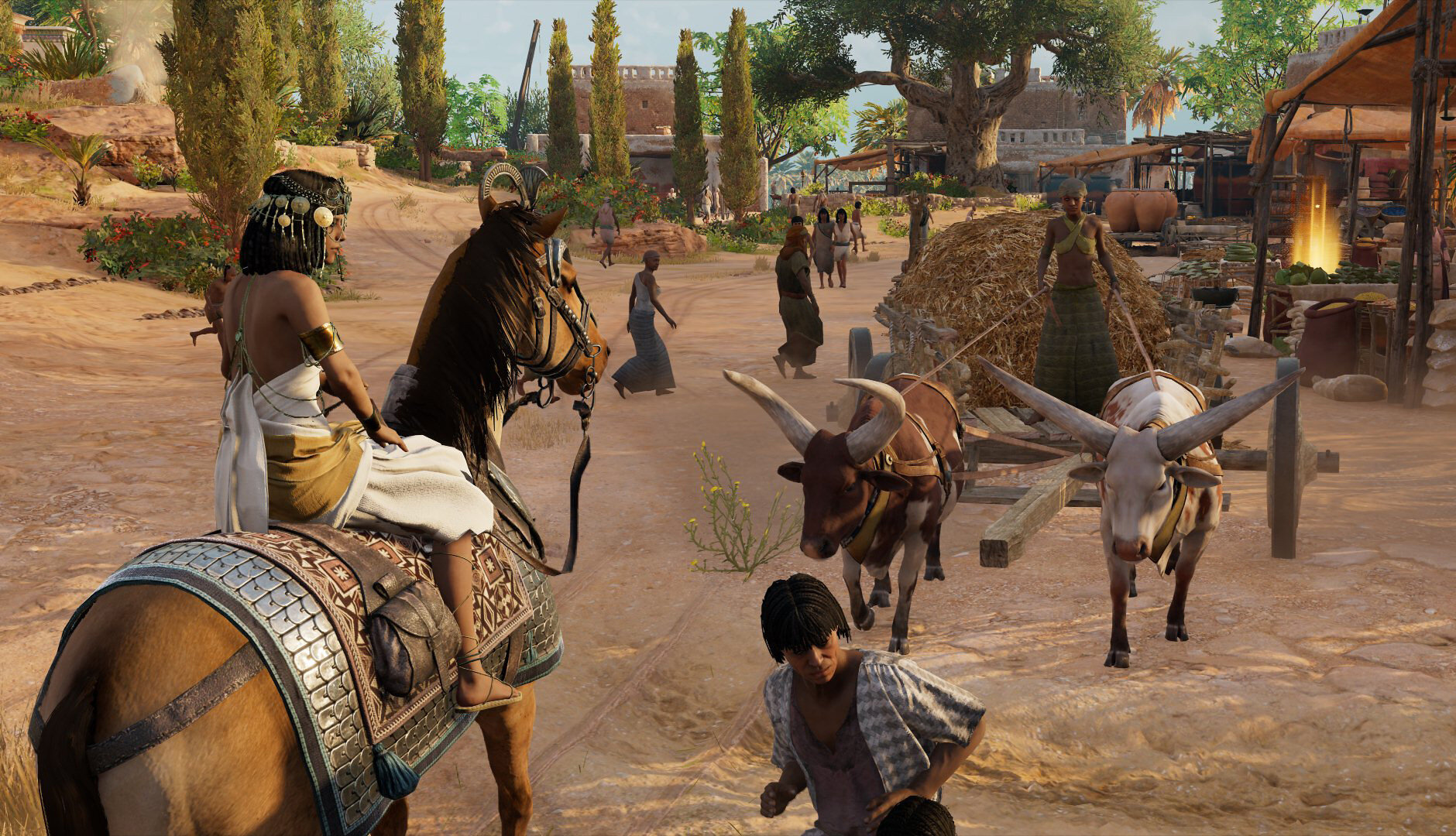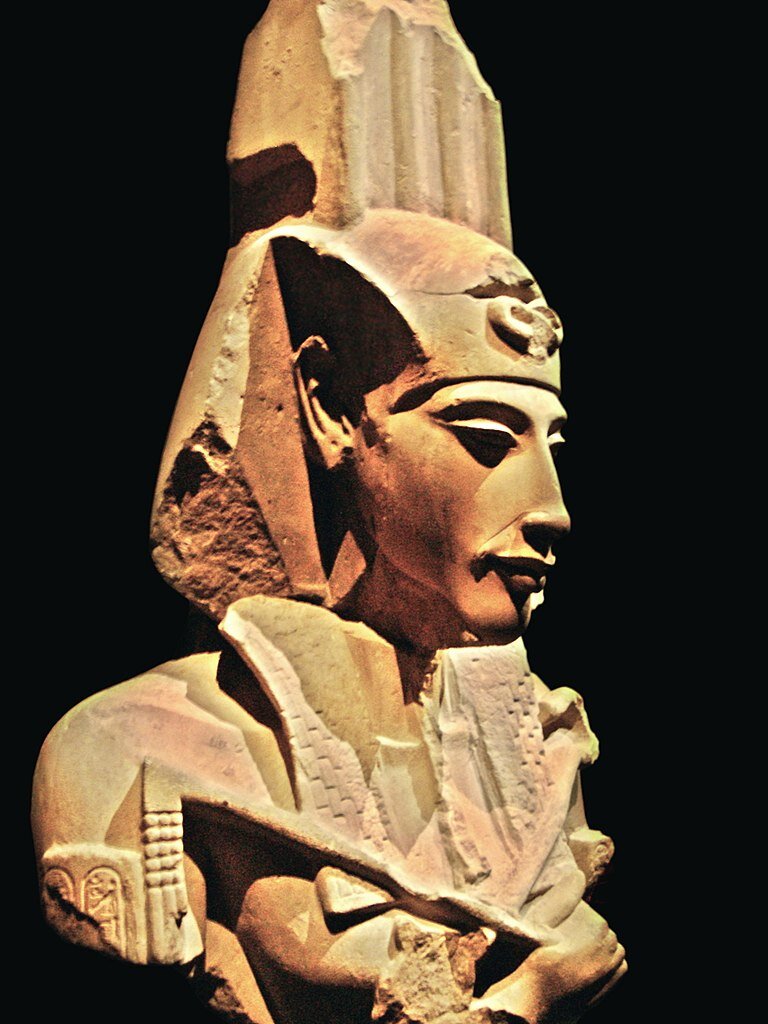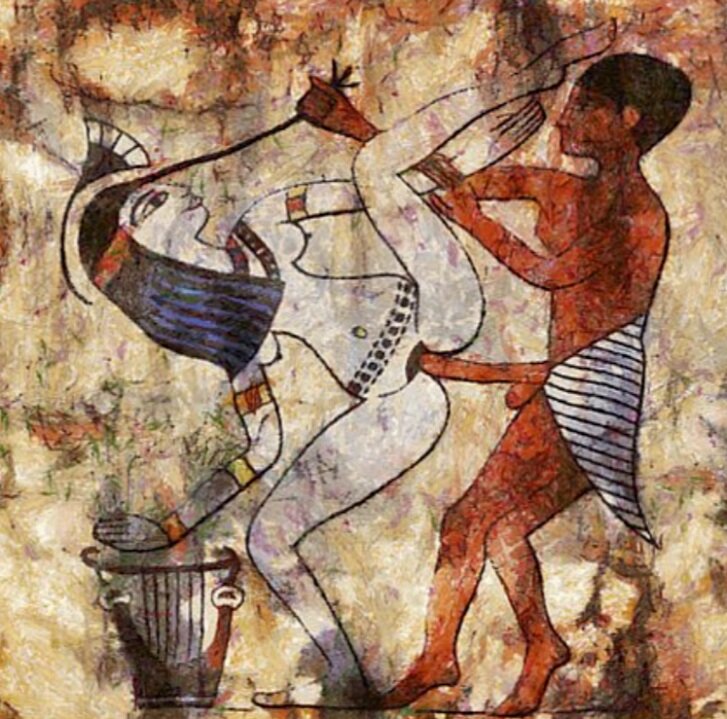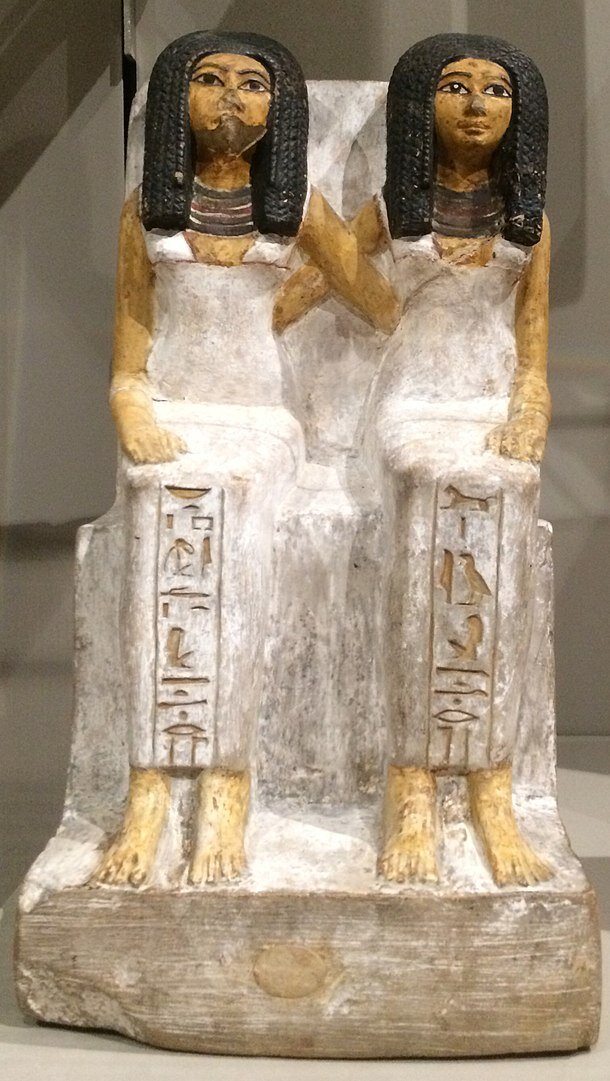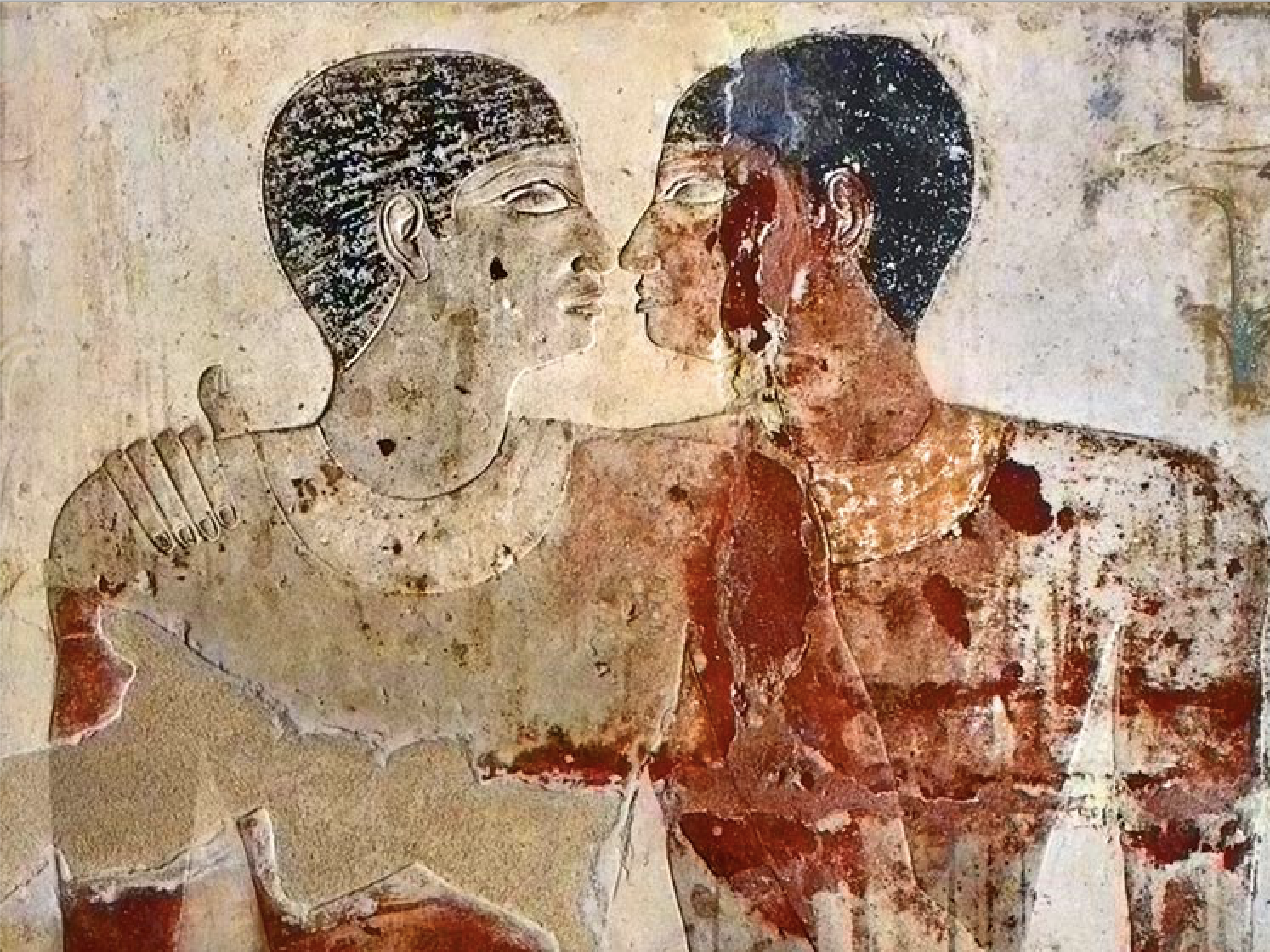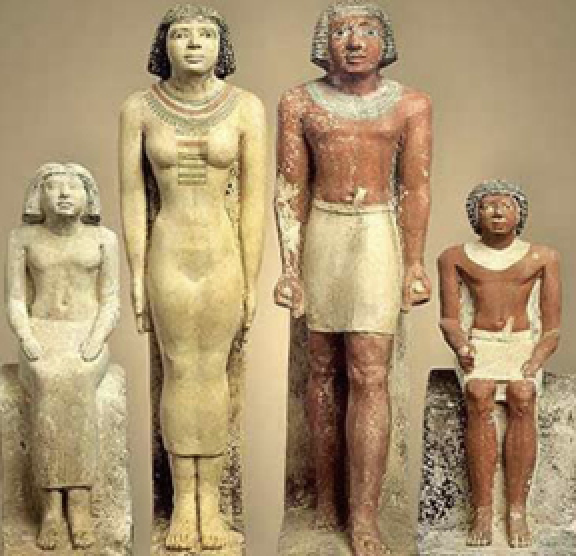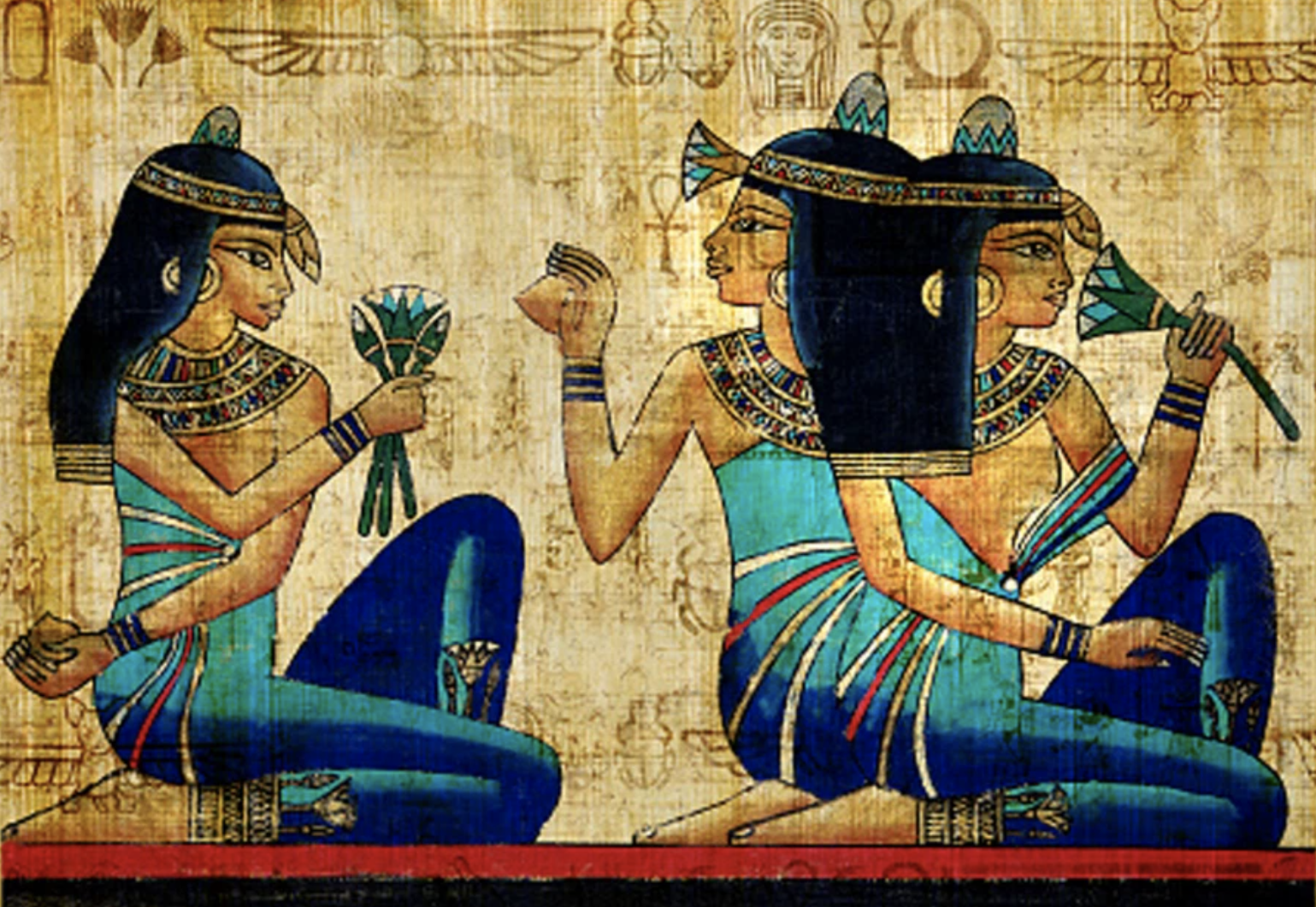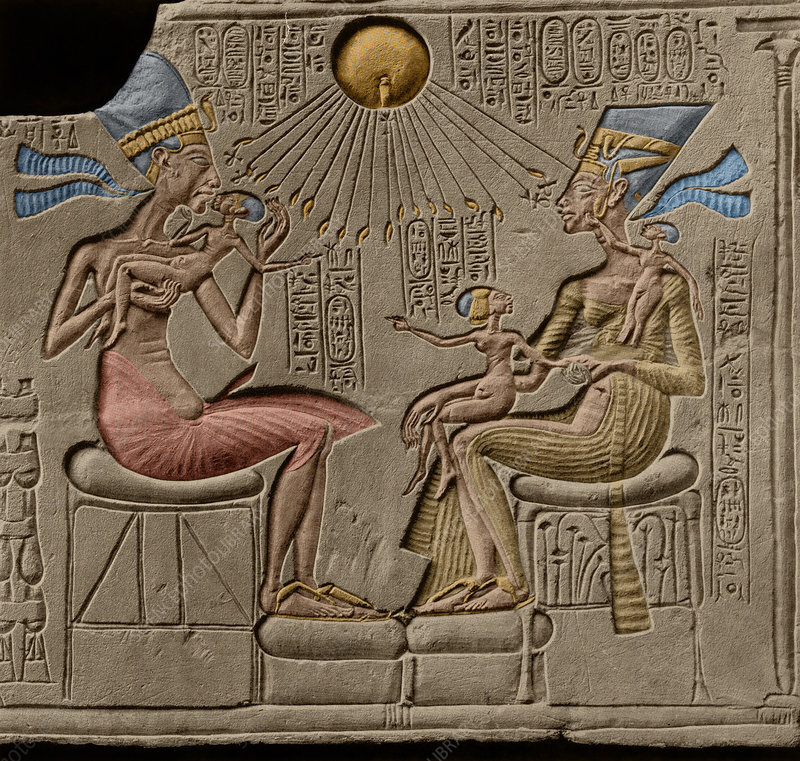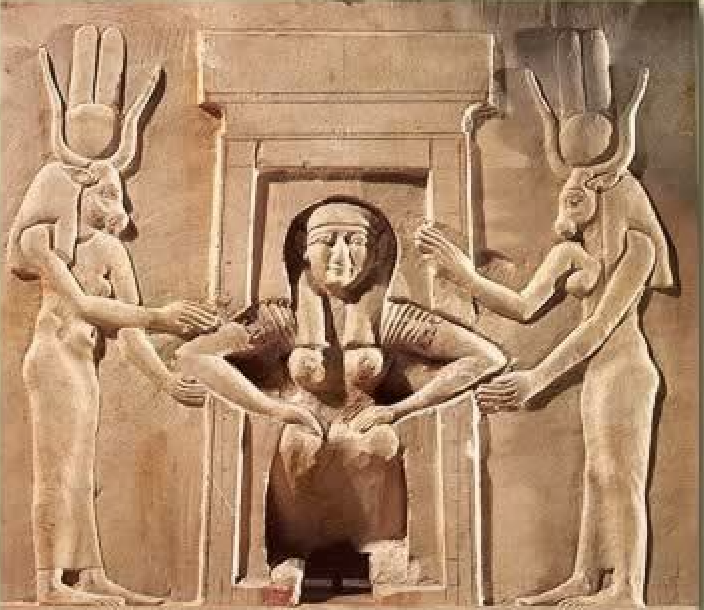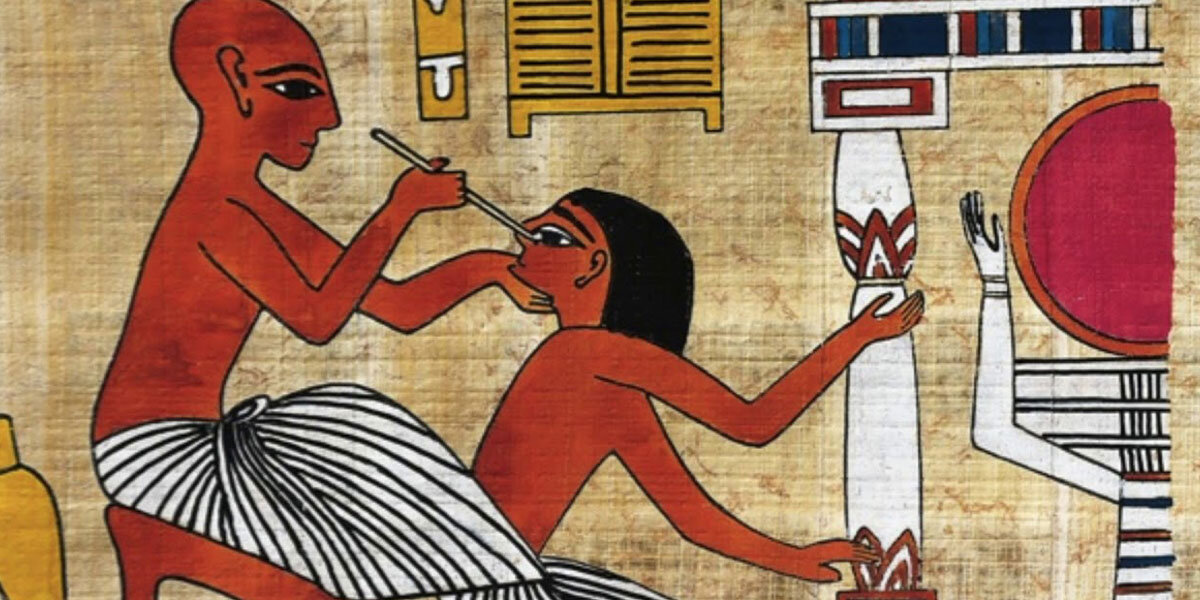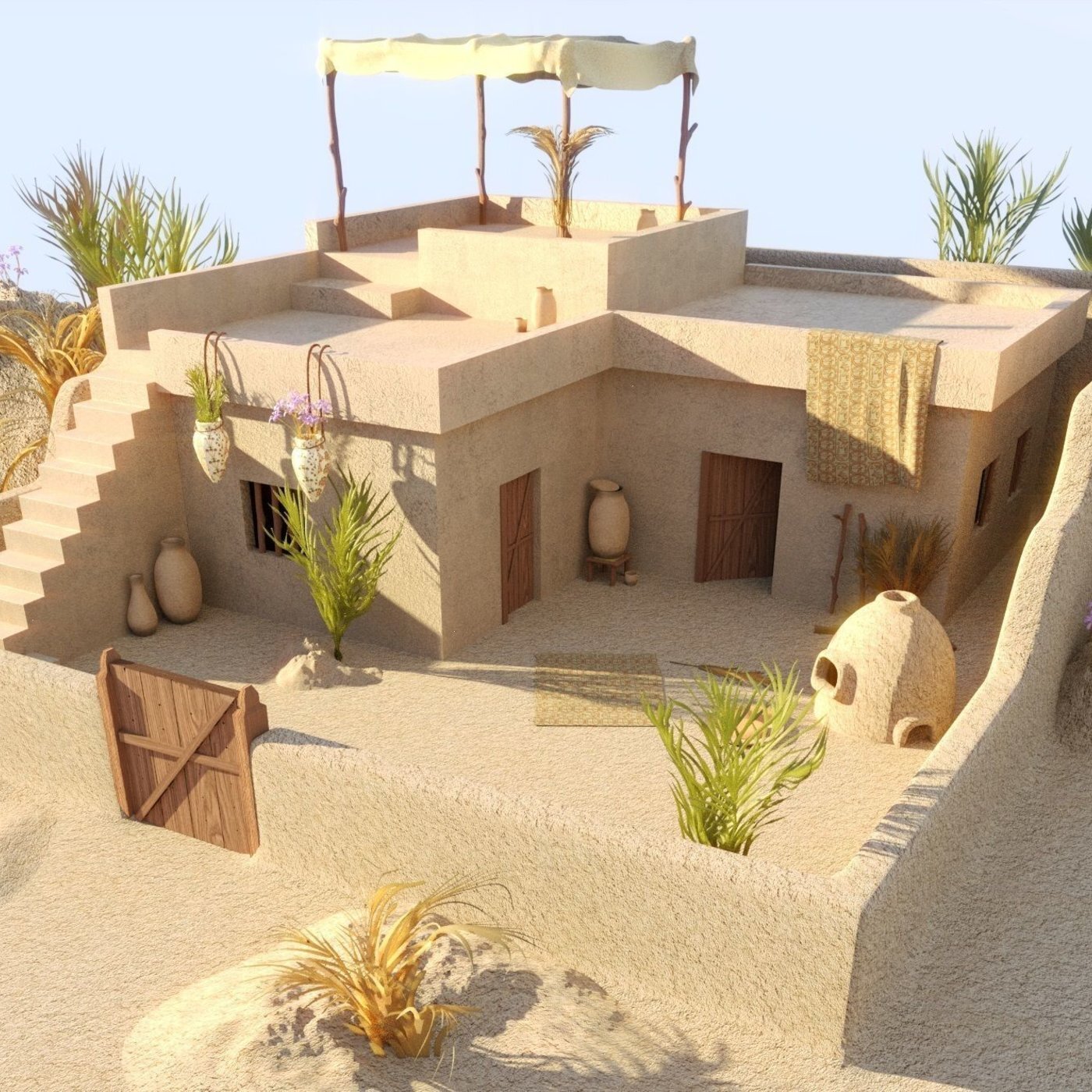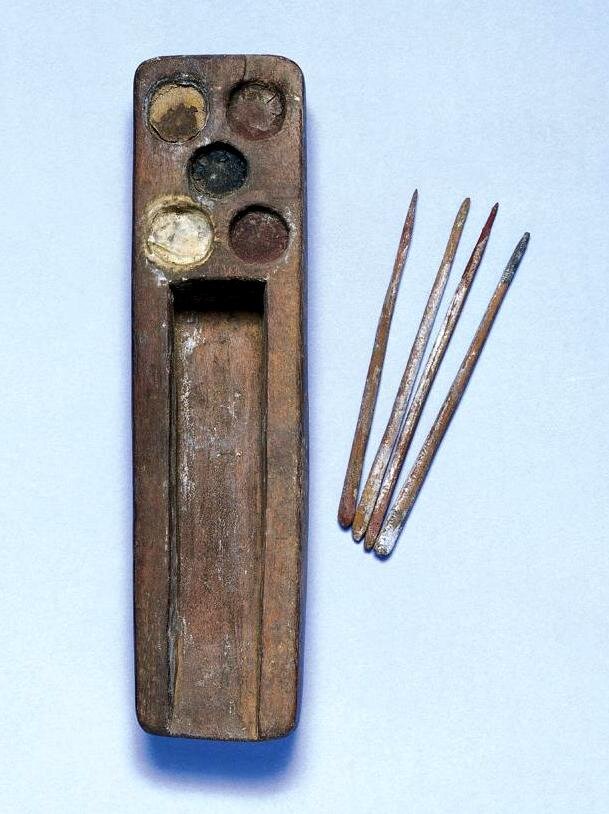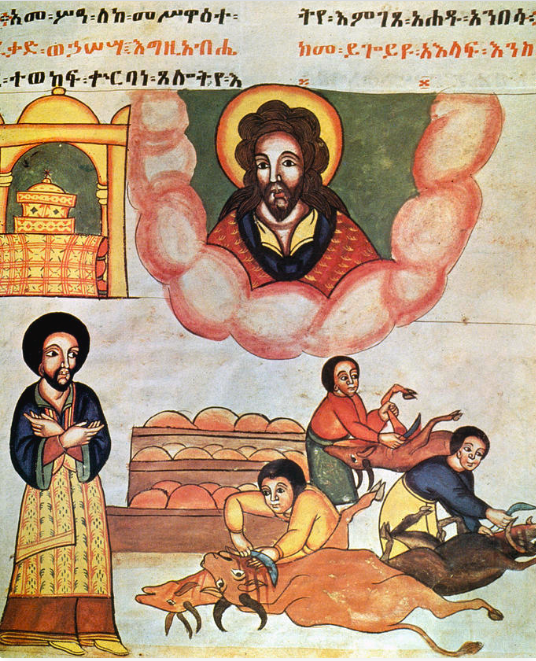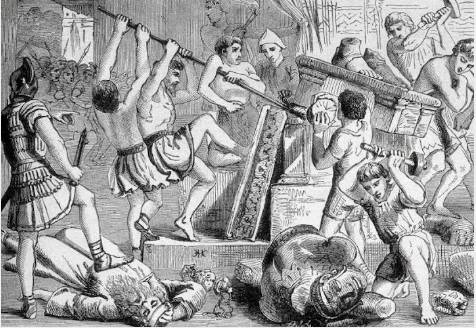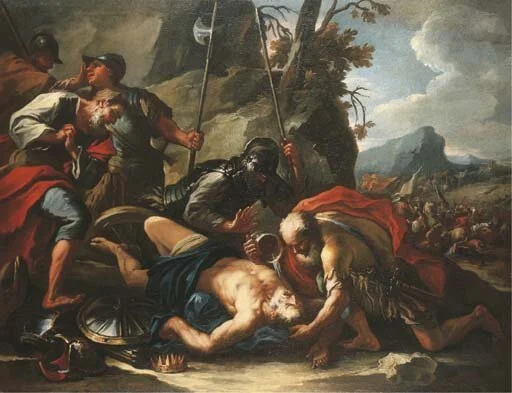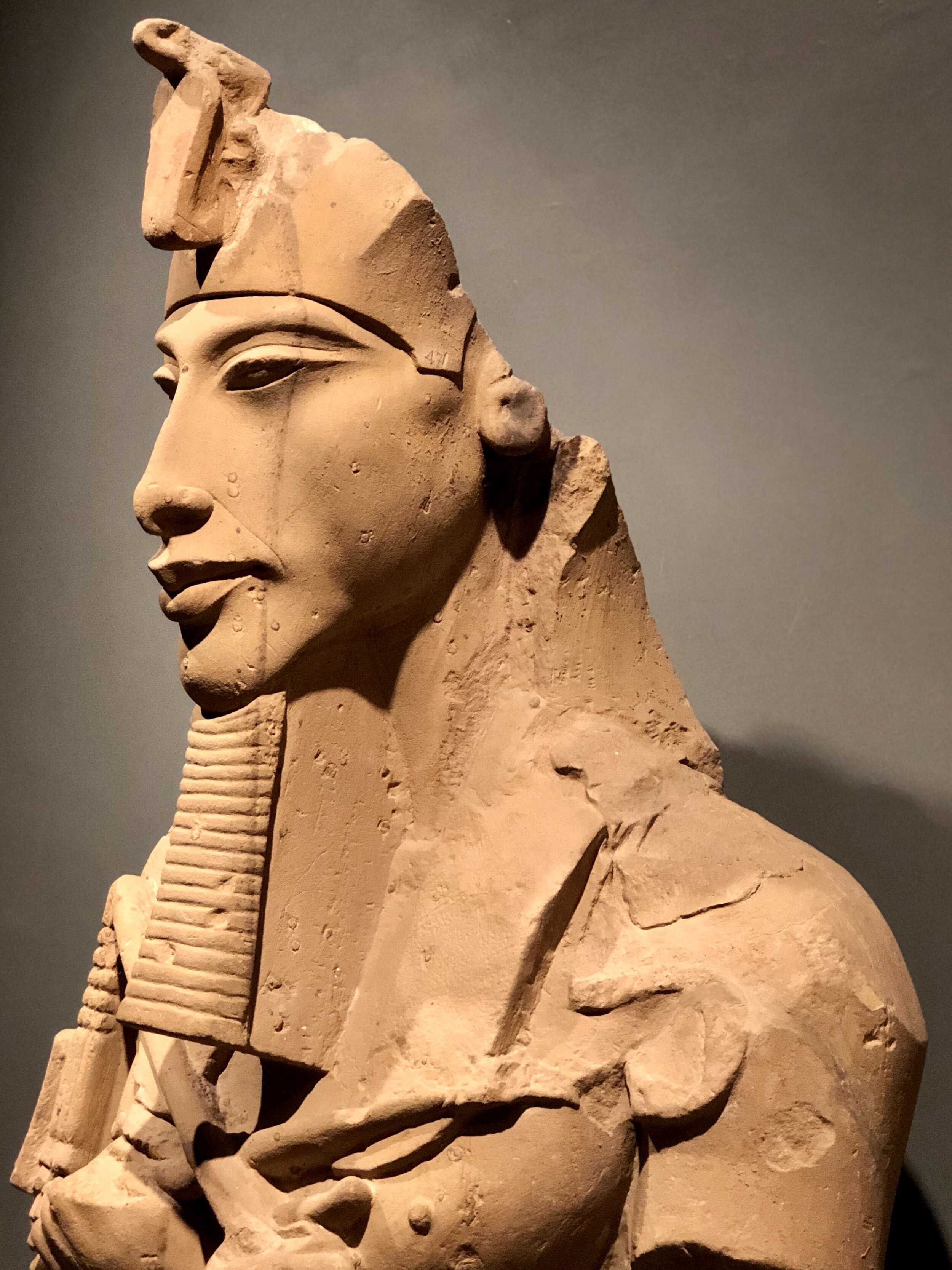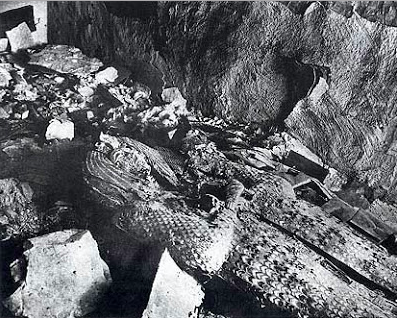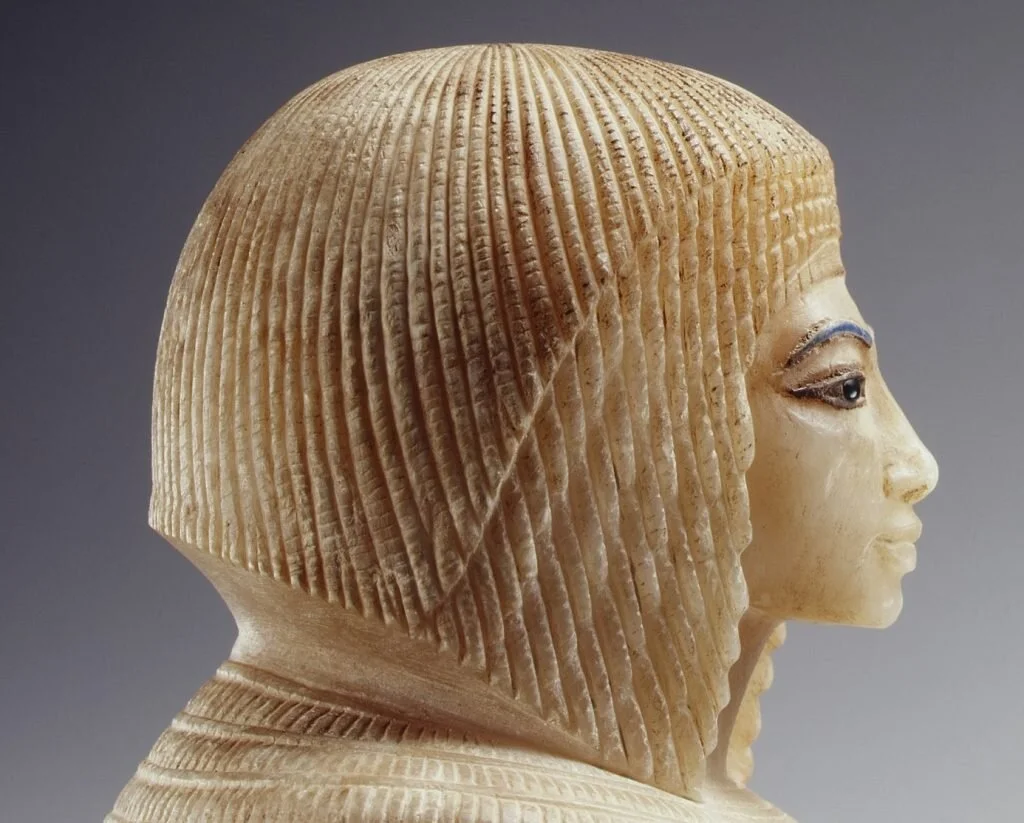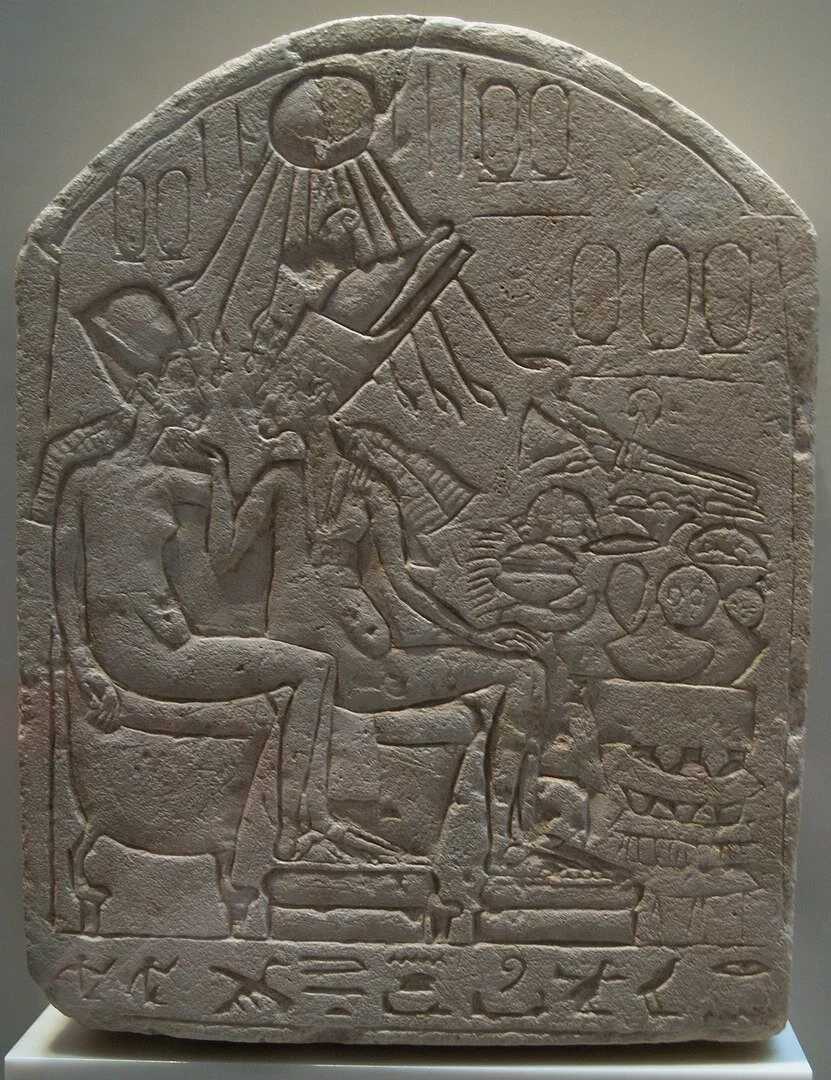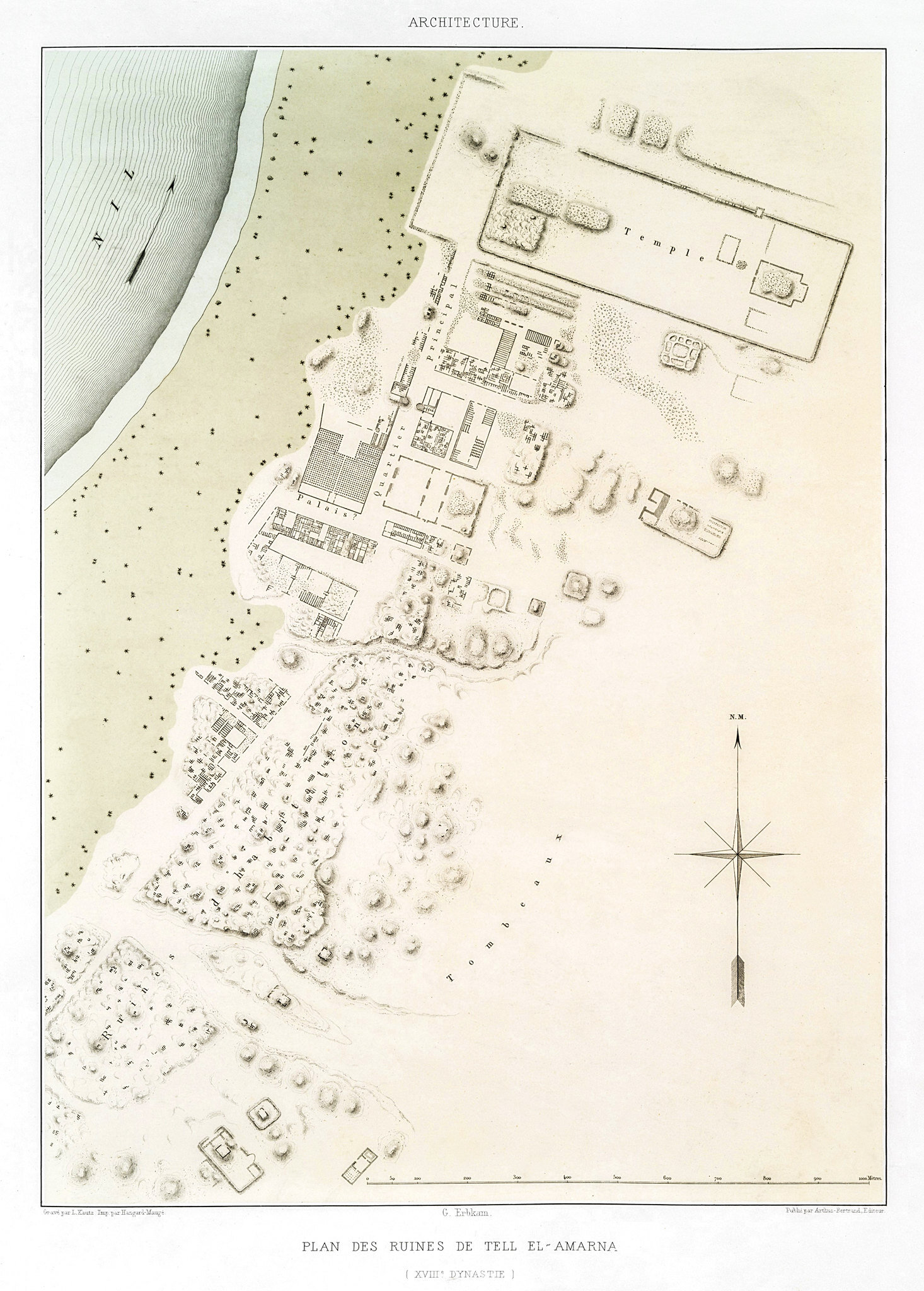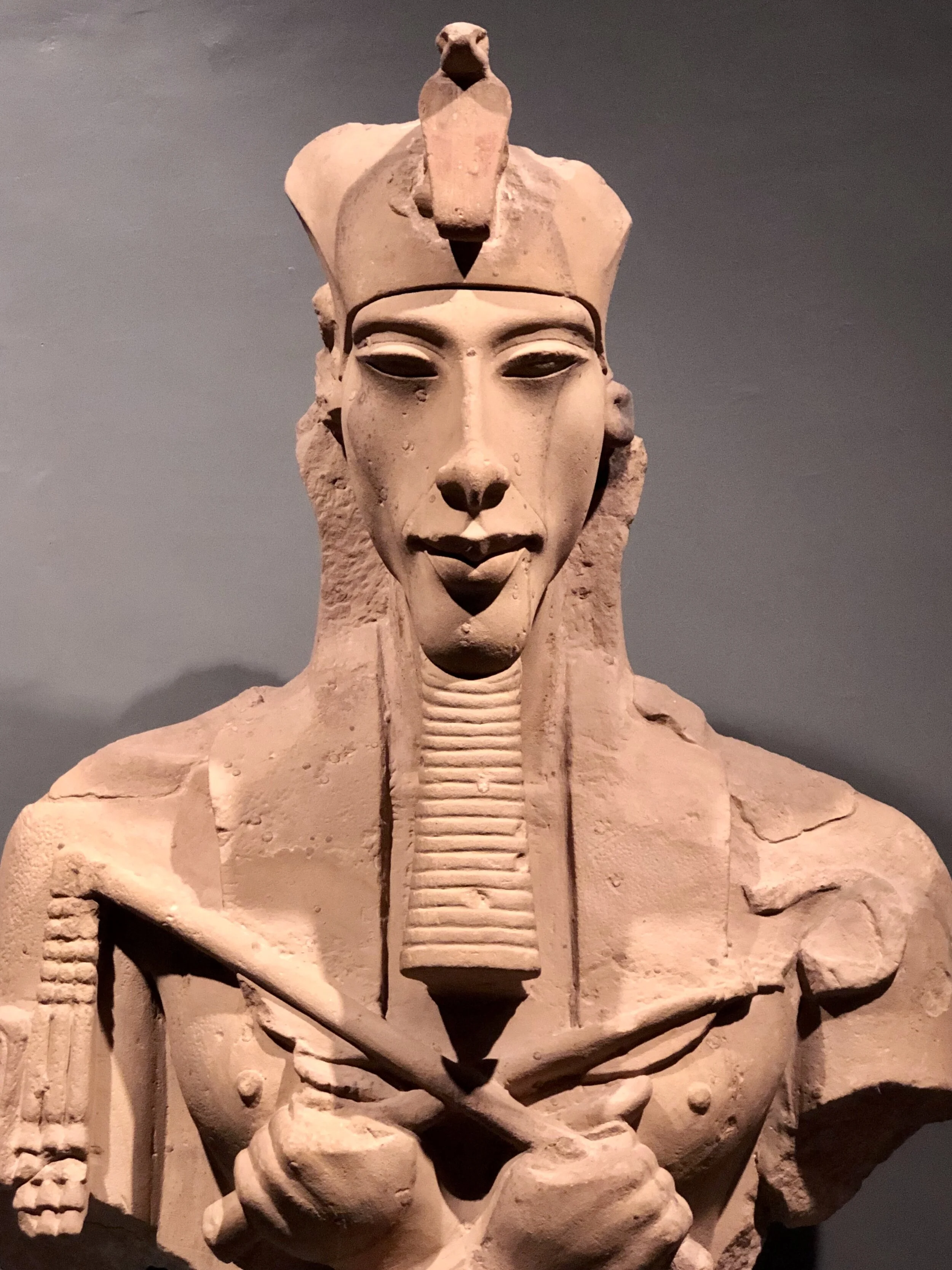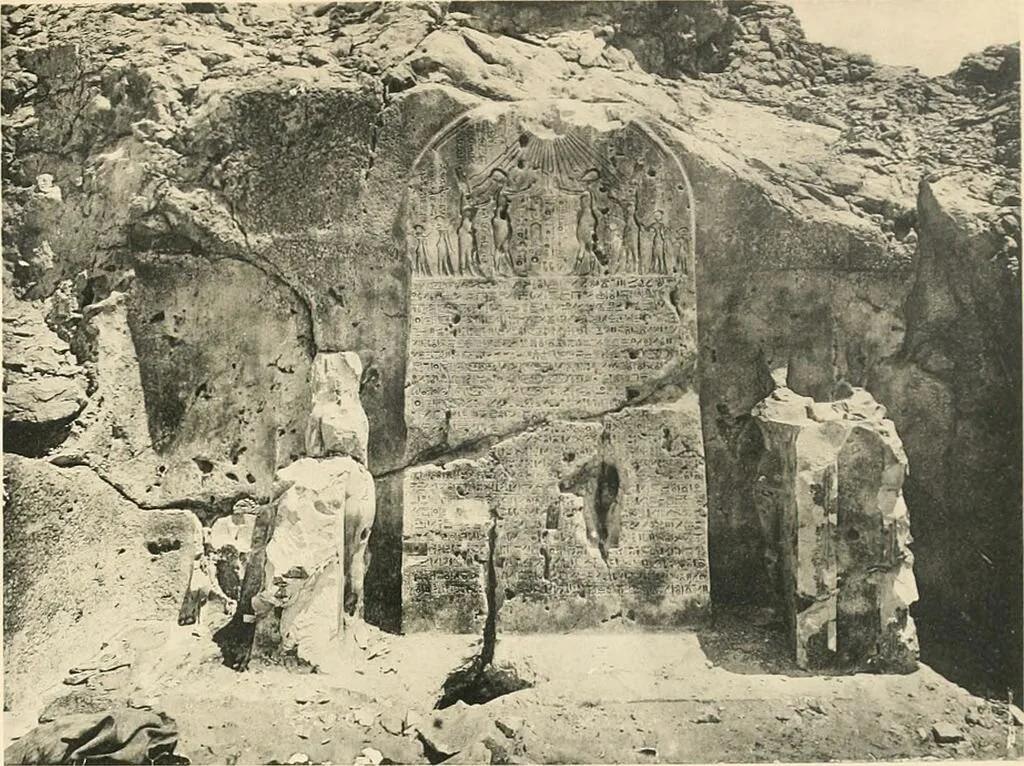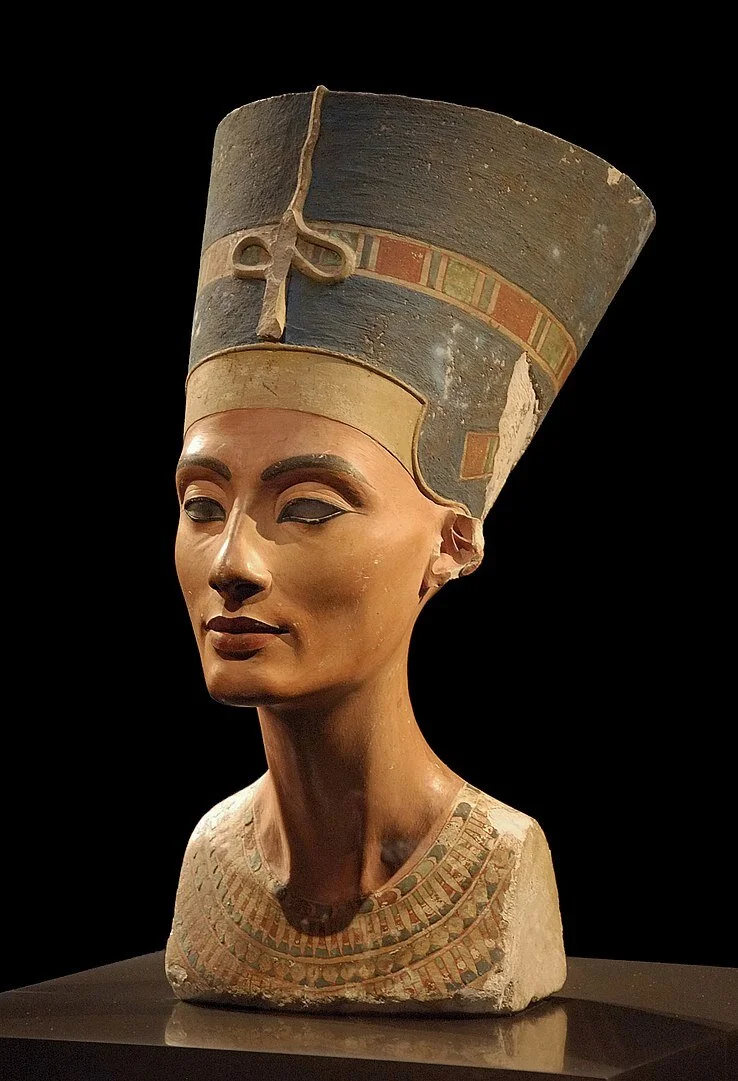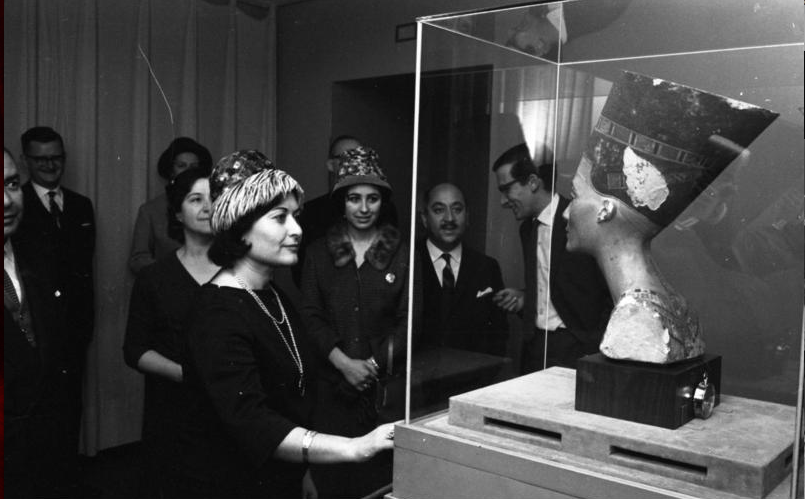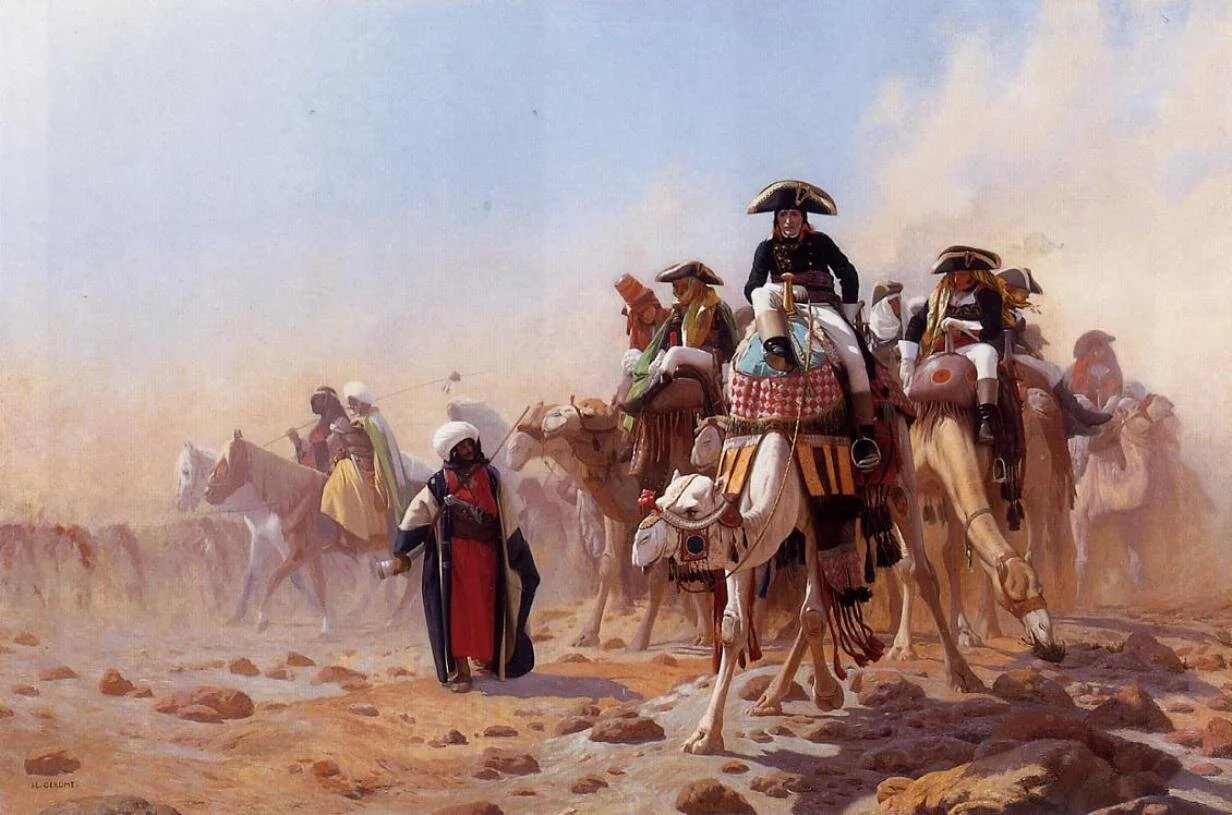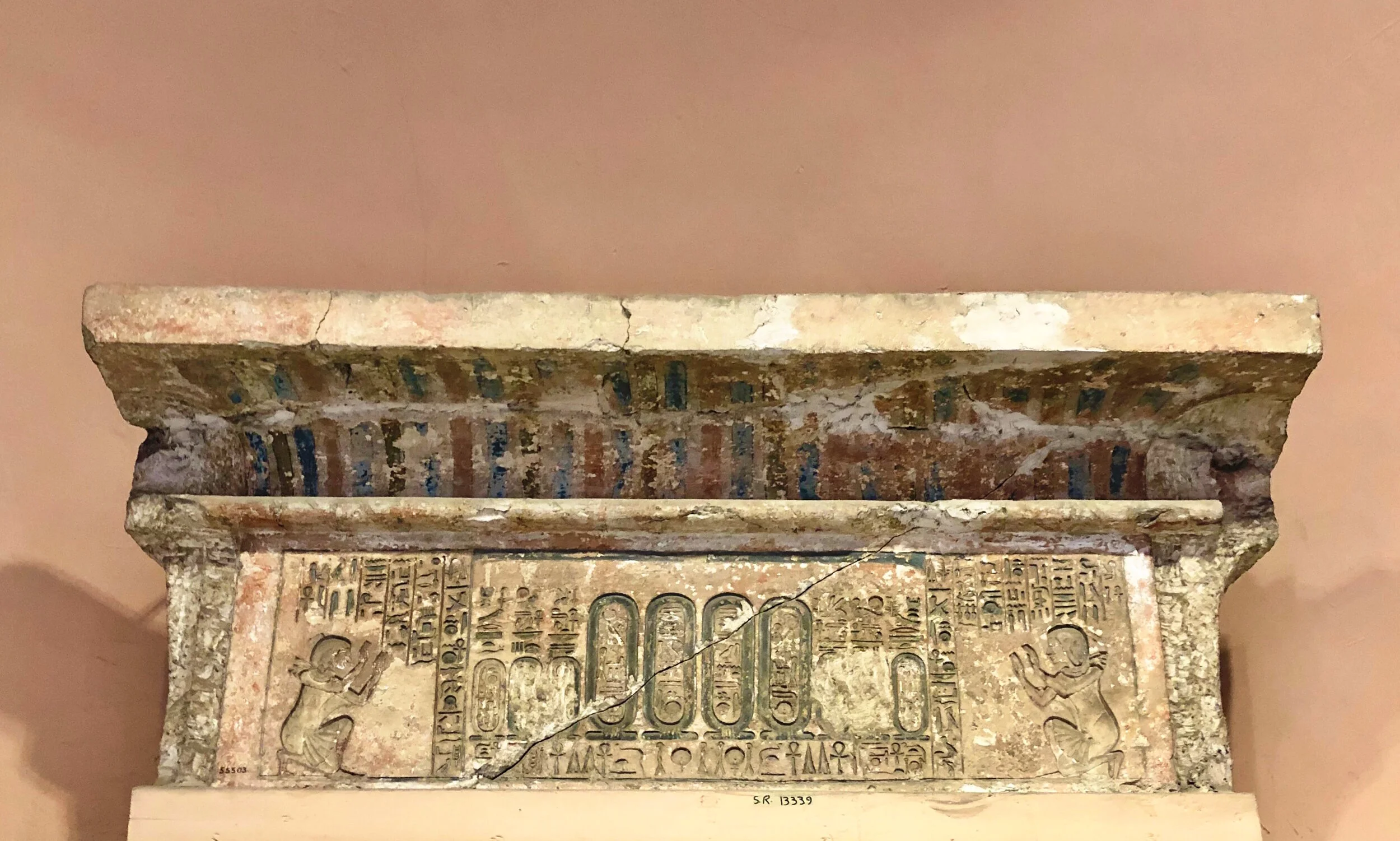What did the average Egyptian look like? A tour of the clothes, jewelry and makeup worn in Ancient Egypt.
What was an Ancient Egyptian’s beauty regime like?
Ancient Egyptians had no qualms about nudity. To be fair, it does get really hot there.
But that doesn’t mean they ran around naked all day. They did have a sense of style — the clothes tended to be simple, with jewelry adding colorful accents.
“When you think about these standards of beauty, you realize how similar they are to our own modern-day ideals.”
The dry desert climate has preserved an astounding amount of statues and paintings from Ancient Egypt, so we have a good idea of what they looked like and what they wore.
What did Ancient Egyptians look like?
On the average, they were shorter than modern-day humans: Women were about 5 feet tall, while men were typically around 5'5".
Ancient Egyptian women strived to be thin with pert breasts, while men with broad shoulders tapering down to flat stomachs were considered handsome. Some things never change.
What was the ideal of beauty?
A good place to start with standards of beauty is the art of a time period. You can see how bodies were depicted in paintings and sculptures — especially those that don’t aim at realism. The body types in Ancient Egyptian art remained amazingly similar for over 3,000 years.
So what was considered hot to the Ancient Egyptian? Thin was in. Curved hips weren’t often depicted, but small, firm breasts were admired.
“[S]ome of the mummies of older women, whose natural equipment had sagged under the relentless pressure of the years, were stuffed with wax or sawdust in the pectoral region to give the necessary curves,” writes Barbara Mertz in Red Land, Black Land: Daily Life in Ancient Egypt.
And the men emulated a long and lean physique, including broad shoulders that tapered down to a flat stomach.
When you think about these standards of beauty, you realize how similar they are to our own modern-day ideals.
What hairdos did Ancient Egyptian women adopt?
How did Ancient Egyptians wear their hair?
“The girls let their hair hang loose or braided it into pigtails, but boys had an unusual coiffure — the head was shaved except for one long lock on the side, which was braided,” Mertz writes. You’ll see this sidelock carved onto many a temple wall.
A statue showing the unusual sidelock worn by Egyptian boys
This distinctive hairstyle was something men would wax idyllic about, feeling nostalgia for the carefree days of boyhood as the time “before I had cut off the sidelock.” Perhaps the act of cutting off the sidelock was a rite of passage into adulthood for Ancient Egyptian men.
Men in the Old Kingdom wore their hair short, not unlike today. Other styles that were popular included the shoulder-length bob and a short cap of tight curls arranged in rows.
A man with rows of tight curls — a popular style in Ancient Egypt
For women, in the Middle Kingdom the haircut that was all the rage had bangs and long hair on the sides cut at an angle.
By the New Kingdom, noblewomen had a new style: a top layer of long, thin curls or crimps, beneath which were rows of shorter curls or marcelled waves that hung to the shoulders.
A wig with a colorful covering from the tomb of a minor wife of Pharaoh Thutmose III.
Did they wear wigs?
Yes, both men and women did, and they were mostly made of human hair. A woman’s wig tended to be long and dark-haired, though in the early dynasties, some females sported hairstyles as short as their male counterparts.
Facial hair wasn’t too popular in Ancient Egypt, but there are some statues that show men with mustaches or beards.
What about facial hair?
“At certain periods neat little mustaches were worn, and sometimes beards seem to have been fashionable,” Mertz writes. But most often, men in Ancient Egypt were clean-shaven. That long goatee you see on statues and carvings of pharaohs was artificial: You can sometimes see the chin straps.
A variety of clothing styles for the different classes. You’ll note that white was the color of choice.
What clothes did Ancient Egyptians wear?
For young children, the answer was nothing — not a bad idea, Mertz muses, given the heat and the propensity of toddlers to get dirty.
“Older children wore clothing like that of their parents, a kilt, or skirt, for boys, a simple linen dress for girls,” Mertz writes.
Linen was pretty much the only material used for clothing, although now and then wool was used. Egyptian weavers could use linen to make everything from a coarse fabric to a delicate gauze.
No bright colors or patterns here: The clothes were usually white.
Dresses and kilts got more elaborate in later periods.
What were Ancient Egyptian women’s dresses like?
Women were typically clad in an ankle-length dress with wide shoulder straps over the breasts.
“The dress must have been designed to fit the figure as tightly as possible, and it may have been stylish to make it of thin material,” Mertz writes, adding, “A becoming style for the slim and graceful, but I wonder how plump ladies felt about it?”
In later periods, fashion got a bit more complex among the well-to-do. Another style that became all the rage had a sheer linen robe with accordion pleats and a small cape that crossed and tied in front of the breasts. It hung loose unless tied with a long sash at the waist.
There are also depictions of dresses made entirely of colored beads, intricately woven into elaborate patterns. They were most likely quite revealing, and where they show up in bas-reliefs and statues, they’re donned by goddesses or comely servant girls.
Men’s wardrobes were simple: a white skirt, or kilt, and no top.
What did Ancient Egyptian men wear?
Most men went shirtless but wore a knee-length kilt. It was secured by knots, sashes or simply tucked in. Later on, the kilt, like women’s dresses, more fancy, and started sporting accordion pleats.
Like the womenfolk, men also wore long, sheer, flowing robes.
Leather sandals were preferred over those made of papyrus, which didn’t last long.
What about their shoes?
Most people went barefoot but had sandals for special occasions. Even the poor would have had a pair of sandals made from papyrus, though they didn’t last long. Leather was preferred.
Ancient Egyptian jewelry didn’t have many precious stones but featured turquoise, garnet, obsidian, lapis lazuli and other colorful rocks.
What was Ancient Egyptian jewelry like?
The precious stones used to make bracelets (worn by women, boys and sometimes men), diadems, girdles, anklets and rings included carnelian, turquoise, garnet, feldspar, rock crystal, obsidian and lapis lazuli.
But the most popular material was faience. If you read anything about Ancient Egypt, you’ll come across this word. Egyptian faience was composed of ground quartz, a colorant and other materials molded into a shape — most often a blue-green bead.
Copper (for the lower class) and gold (for the upper class) were the most common metals used. Both were readily available, thanks to mines in the desert and neighboring Nubia. Electrum, a pale yellow mix of silver and gold, was also commonly used for jewelry.
These large necklaces were called pectorals. This one features faience, a common blue-green material used at the time.
“The most common ornament was the flexible collar, made of concentric rows of beads, some of which might be shaped like animals or flowers or leaves,” Mertz writes. “It covered the front of the wearer’s body from the base of the neck to the middle of the breast, and since it was made of bright colors, it formed an important part of the overall costume.”
Men and women lined their eyes with kohl in a distinctive style.
Did Ancient Egyptians wear makeup?
Anyone even remotely interested in Ancient Egypt (or who has seen Elizabeth Taylor in Cleopatra) is familiar with kohl. Egyptians focused on the eyes, and kohl was the eye shadow of choice. It’s still popular, though it’s now made of soot. But back in the day, Egyptians ground up malachite to make green kohl, and galena to make shades of gray. They applied this eye shadow over the eyebrows and around the eyes using a tiny wooden spoon or a rod made of bone (or, in a pinch, their finger).
Red ochre worked as rouge and sometimes as lipstick.
The Egyptians were fond of oiling themselves, which, as Mertz points out, makes sense in a hot, dry climate.
And to complete the package, people also applied scented oils, including myrrh and resin or floral bouquets, such as lily. –Wally


